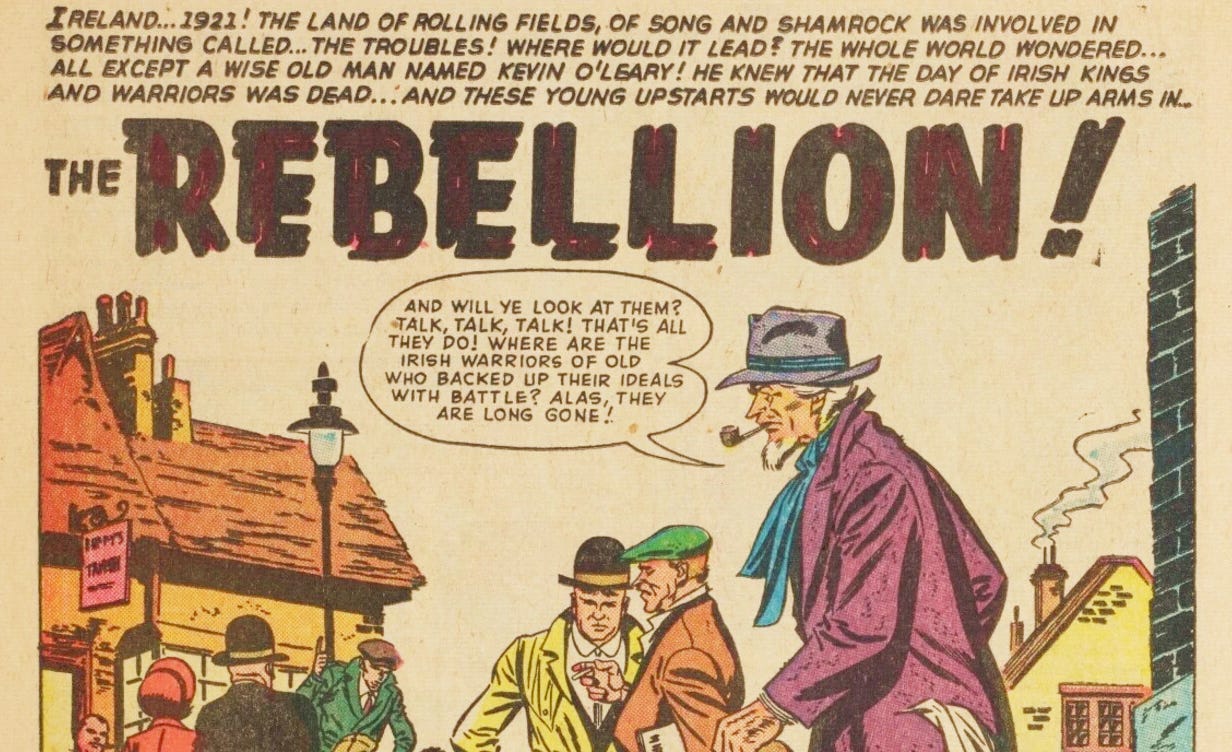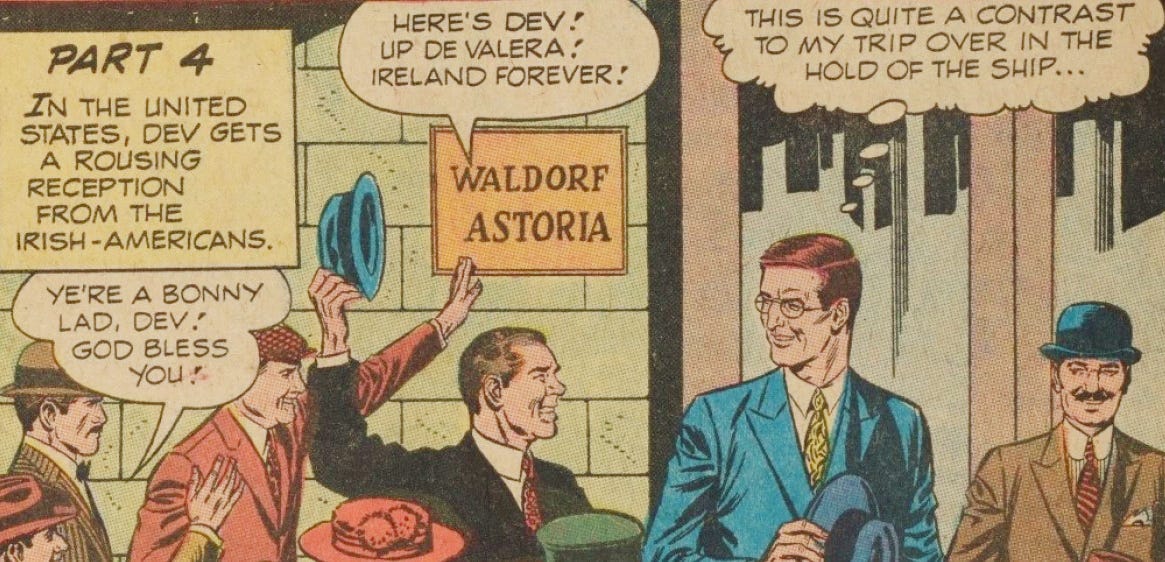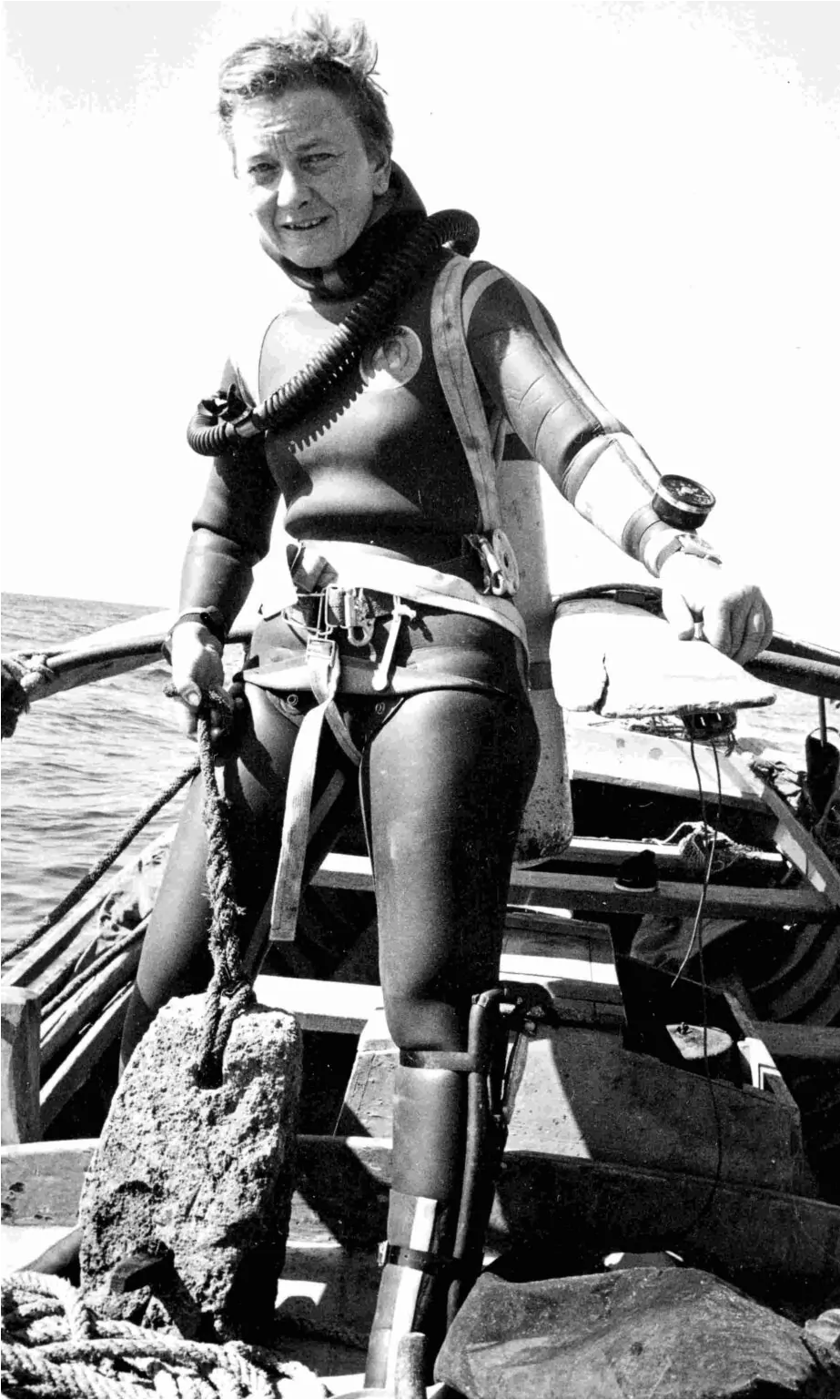fun tales
I'm talking early Irish comics at the national library of Ireland, and pieces of the Lighthouse of Pharos rise from the depths
Dear word explorer,
First, thanks to the Connacht Tribune, for giving me a half-page spread in their Friday edition featuring the news of my World Fantasy Award nomination, under the headline of ‘Fantasies really do come true!’ I don’t read the Tribune very often, but I was entertained throughout, with each region in Connacht having its own section.
I sat down with the newspaper on Friday afternoon with a cup of coffee, and browsed through stories of the decline of rural pubs, the shuttering of post offices, new structural additions to a bridge, the launch of an art exhibition, photos from agricultural shows, enthusiastic sports coverage from all the parishes, plus an extensive Family Notices section for those who have passed on with optional accompanying artwork of a rose or a robin (one sadly missed young man had two red breasted birds adorning his section, which somehow made it more poignant). I ended up learning a great deal about my province.1
For those of us active in the online spheres it’s a reminder not to neglect the basic step of contacting local newspapers who are often interested in news from the area.

It’s a pleasure to announce that I'll be part of a panel discussion on 'Comics at the National Library of Ireland: Discovering Irish comic book history' on Friday, 8 August 2025 from 1.00pm - 2.30pm at the National Library of Ireland, 7-8 Kildare Street, Dublin.
The event is free, but ticketed via Eventbrite, so you will need to book a ticket to secure a place. I hope to see some of my readers at the event!
I'm heartened to see the NLI addressing this subject, and showcasing some unique comics from early in the history of the Irish Free State/Republic. Along with my fellow panellists, I'll be able to view these remarkable artefacts in person before the event. It’s a rare treat and I’m looking forward to examining these pieces of graphic history.
Here’s the description:
Dr. Sinéad McCoole, Keeper of Exhibitions, Learning and Programming, welcomes Derek Landy, Maeve Clancy, Maura McHugh, and Declan Shalvey, in conversation with comic collector and researcher, James Bacon.
Discover a selection of extremely rare comics dating from the 1930s -1960s, ranging from Greann - “The Only Irish Comic” – published in 1934, by Joe Stanley, 1916 Veteran and Printer, to 1968’s “Éamon de Valera, Hero Of Ireland” as drawn by legendary Fantastic Four artist, Joe Sinnott.
Drawing on their diverse comic publishing backgrounds our panellists will discuss the development of comic art, dialogue and other elements to contextualise these works within a broader comic history, whilst sharing which aspects resonate with them, as modern comic professionals and readers. Share our panel’s passion and delight as they reveal extraordinary historic comics from the National Library’s collection.
Older readers will remember my post praising Libraries back in 2023, and that I used to research in the NLI when I studied at Trinity College Dublin, so I’m delighted to return to this iconic building.
James Bacon, who is a dear friend of mine, is listed here as a comic book collector and researcher, although that does little to summarise his passion for the medium and his dogged determination to unearth comic book treasures from our national archives (and bins in charity shops!).
I was lucky to catch his fascinating talk, ‘Irish Conflict in Comics’ at Eastercon in Belfast, which detailed how Ireland and Irish affairs have been depicted in many comics, and included a ‘show and tell’ aspect were we got to examine the comic books themselves. James will be publishing his first book on the subject next year, which is currently titled Rebellion, Nazi Spies and the Troubles: Irish Conflict in 20th Century Comics.
He also published a terrific overview of the creation of Greann (an Irish word for ‘fun’ and ‘lightheartedness’) on DownTheTubes on May 30, 2025. The first issue of this Irish children’s comic book in 1934 contained a long introduction from its fictional editor, ‘Uncle Seamus’, which ended with: ‘GREANN IS OUT FOR FUN.’
Our wonderful panel discussion will be out for fun on the 8th of August!
Do join us!

My life is full of funny synchronicities. About a month ago I wrote an article about lighthouses called, ‘Beacons’, which included a reference to the iconic Pharos of Alexandria lighthouse.
Roughly two weeks later I stumbled upon a story that lead me to a press release from the La Fondation Dassault Systèmes®, about the extraordinary recovery of a portion of the lighthouse from the seabed, which is part of the PHAROS project to gather detailed information about this ancient architectural masterpiece.
Under the scientific supervision of archaeologist and architect Isabelle Hairy from the French Centre national de la recherche scientifique (CNRS), the team has successfully lifted 22 of the lighthouse’s largest stone blocks out of the water. These include monumental door lintels and jambs weighing 70 to 80 tons, the threshold, large base slabs, and parts of a previously unknown monument: a pylon with an Egyptian-style door crafted from the Hellenistic period.
The goal of this exceptional and spectacular operation is to study and scan these architectural elements, adding them to a collection of over 100 blocks already digitized underwater over the past decade. After photogrammetric processing, the scanned blocks will be handed over to volunteer engineers with La Fondation Dassault Systèmes. Like pieces of a giant archaeological puzzle, each block will be analyzed and repositioned virtually. Using scientific simulations and virtual worlds, the team of engineers will test hypotheses about the lighthouse’s construction and collapse, creating a digital twin of this lost wonder. The virtual model will revive the lighthouse’s original grandeur, allowing visitors to explore it as if they were on site.
Back in 1995, when the many underwater ruins in the port of Alexandria were threatened by the building of a concrete barricade, GEDEON Programmes filmed a documentary about the efforts to catalogue and recover an array of magnificent statues and blocks which rested on the seabed, some of which were from the mythic lighthouse itself. Called Alexandria — The Seventh Wonder of the World, it is currently available to watch on YouTube.
Thank goodness I can flick on English subtitles to explain the French narration. I suspect my readers comprise the best intersection of mythology and history buffs who will be happy to cast this documentary onto a bigger screen and enjoy a snapshot from thirty years ago. This is a laborious rescue attempt, retrieving sphinxes and slabs with hieroglyphs from their watery graves, with a lyrical description of the operation that often contains philosophical ruminations.
It feels like watching an aquatic Indiana Jones, except that French archaeologist, Jean-Yves Empereur, wears chic sunglasses, and a cravat under his white shirt; his classy trousers are held up by braces. It might be dirty work, but the French cannot let sartorial standards slip.
Most amazing is the arrival of Honor Frost (1917 —2010), then 75-years-old, who was a pioneer of underwater archaeology, and known as ‘Lady of Anchors’. She was one the original group to begin documenting the site, and joins the much younger crew on a scuba dive to observe the momuments resting in their deep abode — I noticed she did not remove her striking earrings. A different era!
Honor has subsequently passed on, but her legacy continues with the Honor Frost Foundation, which funds marine archaeology with a focus on the eastern Mediterranean.
An action movie could be based on this, centred around recovering a sunken light-stealing gem cursed by a vengeful Egyptian priestess, and would involve smoulderingly attractive archaeologists who are thrown together despite their passionately-held but divergent historical theories. There would be scuba diving in skimpy outfits after long lunches over a carafe of wine, and later on their team would have to evade the billionaire arms-dealing collector who is obsessed with obtaining the power of the jewel (after at least one e-scooter chase through tiny Alexandrian alleyways pursued by harpoon-wielding water mummies). By the end, there will have been sexy kisses, the arrival of a time-jumping Egyptian magician, and the final destruction of the evil tycoon aboard his super yacht by a giant serpent controlled by the undead priestess — which explodes after the team counteract the dark spells at the last moment and make their escape.
The Light of Pharos would only cost approximately €80 million (yes, European films are co-productions and less expensive, despite the unions and rules about not working weekends). It would just about break even, but would launch the career of three upcoming actors and the audacious director who would promptly move to Hollywood and be paid ten times their previous salaries combined.
The writer would have a different fate…
GEDEON Programmes plans to produce a new documentary about the latest excavation, but I like my idea better.
À bientôt, mes amis!

Don’t worry, I have not yet reached the age where I turn to the Death Notices first, or spend much time scanning them for people I know.






Aw, I am jealous to be missing a McHugh - Bacon meetup! Enjoy!
Ooh I've just been reading a book about marine archeology. So cool! There's a lot of really ancient stuff underwater.